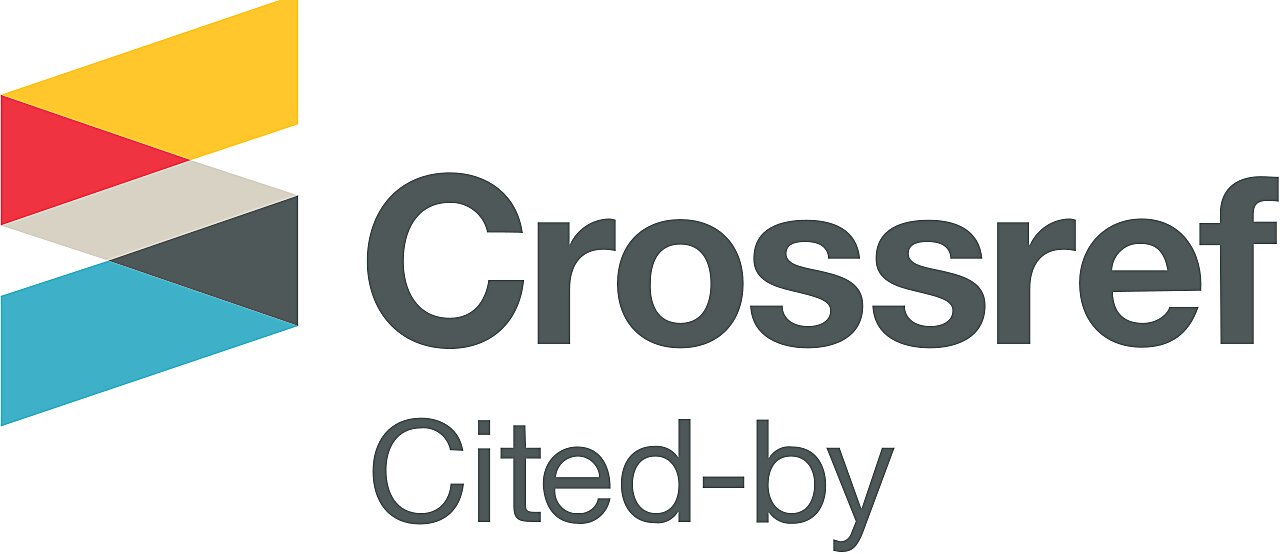
Composición química e inocuidad de Coffea arabica L. procesado por vía seca en Colombia Composición química e inocuidad de Coffea arabica L. procesado por vía seca en Colombia
Palabras clave

Esta obra está bajo una licencia internacional Creative Commons Atribución-NoComercial-SinDerivadas 4.0.
Resumen
La creciente demanda del mercado mundial, evidencia una tendencia por cafés con perfiles sensoriales con atributos diferenciados. El café procesado por vía seca, denominado natural (CN), viene presentándose como una alternativa, de la cual es importante conocer sus características químicas y microbiológicas para garantizar la calidad final de la bebida. Para lograr lo anterior, fueron evaluados cinco tratamientos, en los cuales el CN se sometió a secado solar (S), secado mecánico (M) (40±5°C) y tres combinaciones: S45%+M, S50%+M, S55%+M, realizando secado solar hasta alcanzar diferentes contenidos de humedad en el café y finalizando con secado mecánico hasta el porcentaje de humedad final.
Biografía del autor/a (Ver)
Referencias (Ver)
- Andrews, W., & Hammack, T. (2005). Microbiological Methods. En W. Horwitz & G. W. Latimer (Eds.), Official Methods of Analysis of AOAC International (18.a ed., pp. 1-252). AOAC International.
- Barbosa, M. de S. G., Scholz, M. B. dos S., Kitzberger, C. S. G., & Benassi, M. de T. (2019). Correlation between the composition of green Arabica coffee beans and the sensory quality of coffee brews. Food Chemistry, 292, 275-280. https://doi.org/10.1016/j.foodchem.2019.04.072
- Batista, L. R., Chalfoun, S. M., Silva, C. F., Cirillo, M., Varga, E. A., & Schwan, R. F. (2009). Ochratoxin A in coffee beans (Coffea arabica L.) processed by dry and wet methods. Food Control, 20(9), 784-790. https://doi.org/10.1016/j.foodcont.2008.10.003
- Bauer, D., Abreu, J., Jordão, N., Rosa, J. S. D., Freitas-Silva, O., & Teodoro, A. (2018). Effect of Roasting Levels and Drying Process of Coffea canephora on the Quality of Bioactive Compounds and Cytotoxicity. International Journal of Molecular Sciences, 19(11), 3407. https://doi.org/10.3390/ijms19113407
- Borém, F. M., Coradi, P. C., Saath, R., & Oliveira, J. A. (2008). Qualidade do café natural e despolpado após secagem em terreiro e com altas temperaturas. Ciência e Agrotecnologia, 32(5), 1609–1615. https://doi.org/10.1590/S1413-70542008000500038
- Borém, F. M., Isquierdo, E. P., Alves, G. E., Ribeiro, D. E., Siqueira, V. C., & Taveira, J. H. da S. (2018). Quality of Natural Coffee Dried Under Different Temperatures and Drying Rates. Coffee Science, 13(2), 159–167.
- Clarke, R. J., & Vitzthum, O. G. (Eds.). (2001). Coffee: Recent Developments (1a ed.). Wiley. https://doi.org/10.1002/9780470690499
- Echeverri-Giraldo, L. F., Ortiz, A., Gallego, C. P., & Imbachí, L. C. (2020). Caracterización de la fracción lipídica del café verde en variedades mejoradas de Coffea arabica L. Revista Cenicafé, 71(2), 39–52. https://doi.org/10.38141/10778/71203
- Echeverri-Giraldo, L. F., Osorio Pérez, V., Tabares Arboleda, C., Vargas Gutiérrez, L. J., & Imbachi Quinchua, L. C. (2024). Content of Acidic Compounds in the Bean of Coffea arabica L., Produced in the Department of Cesar (Colombia), and Its Relationship with the Sensorial Attribute of Acidity. Separations, 11(2), 52. https://doi.org/10.3390/separations11020052
- Elhalis, H., Cox, J., & Zhao, J. (2023). Coffee fermentation: Expedition from traditional to controlled process and perspectives for industrialization. Applied Food Research, 3(1), 100253. https://doi.org/10.1016/j.afres.2022.100253
- Figueiredo, L., Meira Borem, F., Carmanini Ribeiro, F., Silva Giomo, G., Henrique Da Silva Taveira, J., & Ribeiro Malta, M. (2015). Fatty acid profiles and parameters of quality of specialty coffees produced in different Brazilian regions. African Journal of Agricultural Research, 10(35), 3484–3493. https://doi.org/10.5897/AJAR2015.9697
- Firestone, D. (2005). Oils and Fats. En W. Horwitz & G. W. Latimer (Eds.), Official Methods of Analysis of AOAC International (18.a ed., pp. 1-72). AOAC International.
- Franca, A. S., Mendonça, J. C. F., & Oliveira, S. D. (2005). Composition of green and roasted coffees of different cup qualities. LWT - Food Science and Technology, 38(7), 709–715. https://doi.org/10.1016/j.lwt.2004.08.014
- Gallego, C. P., Imbachí, L. C., & Osorio, V. (2023). Influencia del proceso de secado del café natural en las características físicas del grano y la calidad sensorial. Revista Cenicafé, 74(1), e74107. https://doi.org/10.38141/10778/74107
- Hamdouche, Y., Meile, J. C., Nganou, D. N., Durand, N., Teyssier, C., & Montet, D. (2016). Discrimination of post-harvest coffee processing methods by microbial ecology analyses. Food Control, 65, 112-120. https://doi.org/10.1016/j.foodcont.2016.01.022
- Higdon, J. V., & Frei, B. (2006). Coffee and Health: A Review of Recent Human Research. Critical Reviews in Food Science and Nutrition, 46(2), 101-123. https://doi.org/10.1080/10408390500400009
- Isquierdo, E., Borém, F., Andrade, E., Corrêa, J., Oliveira, P., & Alves, G. (2013). Drying Kinetics and Quality of Natural Coffee. Transactions of the ASABE, 56(3), 995–1001. https://doi.org/10.13031/trans.56.9794
- Kinton, V. (2005). Malt Beverages and Brewing Materials. En W. Horwitz & G. W. Latimer (Eds.), Official Methods of Analysis of AOAC International (18.a ed., pp. 1-42). AOAC International.
- Knopp, S., Bytof, G., & Selmar, D. (2006). Influence of processing on the content of sugars in green Arabica coffee beans. European Food Research and Technology, 223(2), 195-201. https://doi.org/10.1007/s00217-005-0172-1
- Koshiro, Y., Jackson, M. C., Nagai, C., & Ashihara, H. (2015). Changes in the content of sugars and organic acids during ripening of Coffea arabica and Coffea canephora fruits. European Chemical Bulletin, 4(8), 378–383. https://www.eurchembull.com/?mno=66742
- Malta, M. R., Rosa, S. D. V. F. D., Lima, P. M., Fassio, L. D. O., & Santos, J. B. (2013). Alterações na qualidade do café submetido a diferentes formas de processamento e secagem. Revista Engenharia na Agricultura, 21(5), 431–440. https://doi.org/10.13083/reveng.v21i5.450
- Marin, C., & Puerta, G. I. (2008). Contenido de ácidos clorogénicos en granos de Coffea arabica L. y C. Canephora, según el desarrollo del fruto. Revista Cenicafé, 59(1), 7–28. http://hdl.handle.net/10778/60
- Martinez, S. J., Batista, N. N., Bressani, A. P. P., Dias, D. R., & Schwan, R. F. (2022). Molecular, Chemical, and Sensory Attributes Fingerprinting of Self-Induced Anaerobic Fermented Coffees from Different Altitudes and Processing Methods. Foods, 11(24), 3945. https://doi.org/10.3390/foods11243945
- Milla Flores, F. H., & Castro Luna, A. (2020). Evaluación del nivel contaminante de ocratoxina a (ota) mediante columnas de inmunoafinidad y cromatografía líquida de alta eficiencia en coffea arabica l. “Café”. Revista de la Sociedad Química del Perú, 86(2), 164–174. https://doi.org/10.37761/rsqp.v86i2.286
- Nakayama, C. C., Teixeira, A. A., Teixeira, R. R., Reis, M., Monteiro, A., Bueno, J., & Taniwaki, M. H. (2020). Sucessão de microrganismos em diferentes estádios de secagem do café e sua influência na bebida. Brazilian Journal of Development, 6(1), 2402–2418. https://doi.org/10.34117/bjdv6n1-177
- Nikolova-Damyanova, B., Velikova, R., & Jham, G. N. (1998). Lipid classes, fatty acid composition and triacylglycerol molecular species in crude coffee beans harvested in Brazil. Food Research International, 31(6–7), 479–486. https://doi.org/10.1016/S0963-9969(99)00016-2
- Oestreich-Janzen, S. (2010). Chemistry of Coffee. En H.-W. Liu & L. Mander (Eds.), Comprehensive Natural Products II (Vol. 3, pp. 1085–1117). Elsevier. https://doi.org/10.1016/B978-008045382-8.00708-5
- Osorio Pérez, V., Matallana Pérez, L. G., Fernandez-Alduenda, M. R., Alvarez Barreto, C. I., Gallego Agudelo, C. P., & Montoya Restrepo, E. C. (2023). Chemical Composition and Sensory Quality of Coffee Fruits at Different Stages of Maturity. Agronomy, 13(2), 341. https://doi.org/10.3390/agronomy13020341
- Osorio, V., Pabón, J., Shuler, J., & Fernández-Alduenda, M. R. (2022). Efecto de la combinación de procesos de secado en la calidad del café natural obtenido vía seca. Revista Cenicafé, 73(1), e73101. https://doi.org/10.38141/10778/73101
- Pabón, J., Osorio, V., & Gallego, C. P. (2023). Inocuidad del café durante la interrupción del secado mecánico. Revista Cenicafé, 74(2), e74205. https://doi.org/10.38141/10778/74205
- Paterson, R. R. M., Lima, N., & Taniwaki, M. H. (2014). Coffee, mycotoxins and climate change. Food Research International, 61, 1–15. https://doi.org/10.1016/j.foodres.2014.03.037
- Peñuela-Martínez, A. E., Pabón, J., & Sanz-Uribe, J. R. (2013). Método fermaestro: Para determinar la finalización de la fermentación del mucílago de café. Avances Técnicos Cenicafé, 431, 1–8. https://doi.org/10.38141/10779/0431
- Puerta, G. I. (2003). Prevenga la ochratoxina A y mantenga la inocuidad y la calidad del café. Avances Técnicos Cenicafé, 317, 1¬¬–8. https://doi.org/10.38141/10779/0317
- Puerta, G. I. (1996). Evaluación de la calidad del café colombiano procesado por vía seca. Revista Cenicafé, 47(2), 85¬¬–90. http://hdl.handle.net/10778/63
- Rendón, M. Y., de Jesus Garcia Salva, T., & Bragagnolo, N. (2014). Impact of chemical changes on the sensory characteristics of coffee beans during storage. Food Chemistry, 147, 279-286. https://doi.org/10.1016/j.foodchem.2013.09.123
- Santiago, W. D., Teixeira, A. R., Santiago, J. D. A., Lopes, A. C. A., Brandão, R. M., Caetano, A. R., Cardoso, M. D. G., & Resende, M. L. V. (2020). Development and validation of chromatographic methods to quantify organic compounds in green coffee (Coffea arabica) beans. Australian Journal of Crop Science, 14(08):2020, 1275–1282. https://doi.org/10.21475/ajcs.20.14.08.p2433
- Scholz, M. B. D. S., Prudencio, S. H., Kitzberger, C. S. G., & Silva, R. (2019). Physico-chemical characteristics and sensory attributes of coffee beans submitted to two post-harvest processes. Journal of Food Measurement and Characterization, 13(1), 831–839. https://doi.org/10.1007/s11694-018-9995-x
- Silva, C., Batista, L., Abreu, L., Dias, E., & Schwan, R. (2008). Succession of bacterial and fungal communities during natural coffee (Coffea arabica) fermentation. Food Microbiology, 25(8), 951–957. https://doi.org/10.1016/j.fm.2008.07.003
- Smrke, S., Kroslakova, I., Gloess, A. N., & Yeretzian, C. (2015). Differentiation of degrees of ripeness of Catuai and Tipica green coffee by chromatographical and statistical techniques. Food Chemistry, 174, 637–642. https://doi.org/10.1016/j.foodchem.2014.11.060
- Vanesa, D., & Ana, P. (2013). Occurrence of Ochratoxin A in coffee beans, ground roasted coffee and soluble coffee and method validation. Food Control, 30(2), 675-678. https://doi.org/10.1016/j.foodcont.2012.09.004
- Villarreal, D., Baena, L. M., & Posada, H. E. (2012). Análisis de lípidos y ácidos grasos en café verde de líneas avanzadas de Coffea arabica cultivadas en Colombia. Revista Cenicafé, 63(1), 19–40. http://hdl.handle.net/10778/520
- Vincent, J.-C. (1987). Green Coffee Processing. En R. J. Clarke & R. Macrae (Eds.), Coffee (pp. 1–33). Springer Netherlands. https://doi.org/10.1007/978-94-009-3417-7_1
- Wendt, N. J. (2005). Animal Feed. En W. Horwitz & G. W. Latimer (Eds.), Official Methods of Analysis of AOAC International (18.a ed., pp. 1-72). AOAC International.
Artículos más leídos del mismo autor/a
- Valentina Osorio Pérez , Jenny Paola Pabón Usaquén , Claudia Patricia Gallego, Luz Fanny Echeverri-Giraldo , Efecto de las temperaturas y tiempos de tueste en la composición química del café , Revista Cenicafé: Vol. 72 Núm. 1 (2021): Revista Cenicafé
- Valentina Osorio, Jenny Pabón, Efecto de las temperaturas y tiempos de tueste en la calidad sensorial del café , Revista Cenicafé: Vol. 73 Núm. 1 (2022): Revista Cenicafé
- Valentina Osorio, Jenny Pabón, Paola Andrea Calderón, Luis Carlos Imbachi, Calidad física, sensorial y composición química del café cultivado en el departamento del Huila , Revista Cenicafé: Vol. 72 Núm. 2 (2021): Revista Cenicafé
- Luz Fanny Echeverri-Giraldo, Aristófeles Ortiz, Claudia Patricia Gallego, Luis Carlos Imbachí, Caracterización de la fracción lipídica del café verde en variedades mejoradas de Coffea arabica L. , Revista Cenicafé: Vol. 71 Núm. 2 (2020): Revista Cenicafé
- Claudia Rocío Gómez, Aristófeles Ortiz, Claudia Gallego, Luz Fanny Echeverri, Validación de curvas de calibración por NIRS para la predicción de compuestos químicos de café almendra , Revista Cenicafé: Vol. 72 Núm. 2 (2021): Revista Cenicafé
- Claudia Rocío Gómez, Claudia Patricia Gallego, Luz Fanny Echeverri, Jenny Pabón, Aristófeles Ortiz, Valentina Osorio, Determinación de compuestos químicos del café tostado por Espectroscopia de Infrarrojo Cercano (NIRS) , Revista Cenicafé: Vol. 74 Núm. 1 (2023): Revista Cenicafé
- Valentina Osorio, Jenny Pabón, Joel Shuler, Mario Roberto Fernández-Alduenda, Efecto de la combinación de procesos de secado en la calidad del café natural obtenido vía seca , Revista Cenicafé: Vol. 73 Núm. 1 (2022): Revista Cenicafé
- Claudia Patricia Gallego, Nelson Rodríguez Valencia , Identificación de algunas variables fisicoquímicas y microbiológicas asociadas con el defecto reposo en el café , Revista Cenicafé: Vol. 72 Núm. 1 (2021): Revista Cenicafé
- Carlos Andrés Unigarro, Luis Carlos Imbachí, Jenny Paola Pabón, Valentina Osorio, José Ricardo Acuña-Zornosa, Efecto del ácido salicílico sobre la maduración fenológica de frutos de café en pre-cosecha , Revista Cenicafé: Vol. 72 Núm. 2 (2021): Revista Cenicafé
- Jenny Pabón, Valentina Osorio, Luis Carlos Imbachi, Calidad física, sensorial y composición química del café cultivado en el Oriente del departamento de Caldas , Revista Cenicafé: Vol. 72 Núm. 2 (2021): Revista Cenicafé







